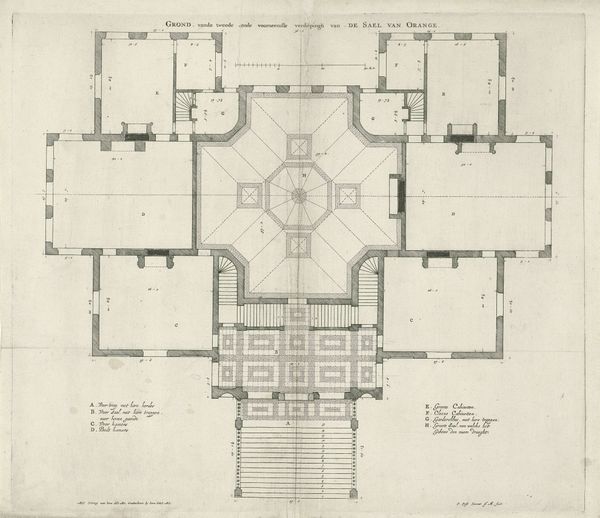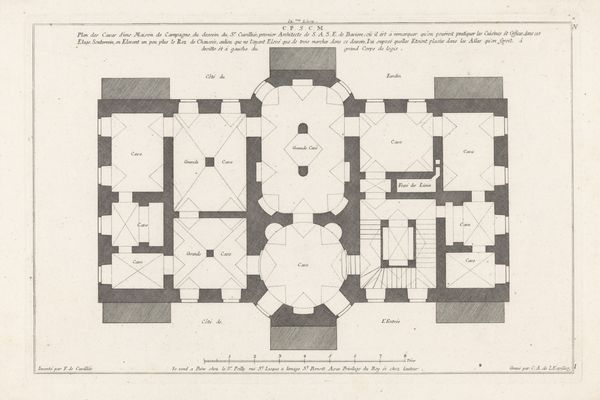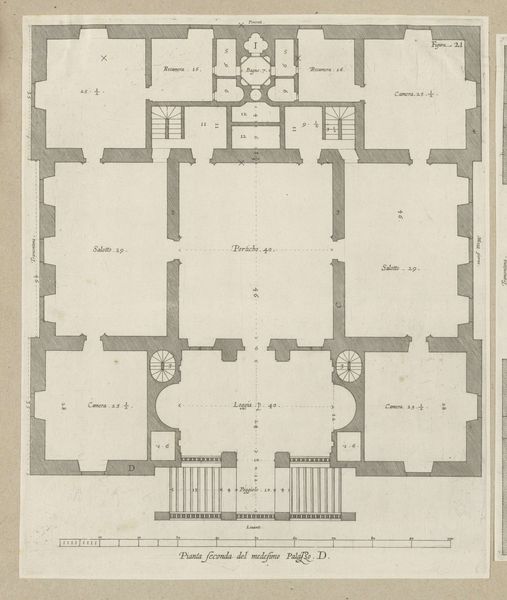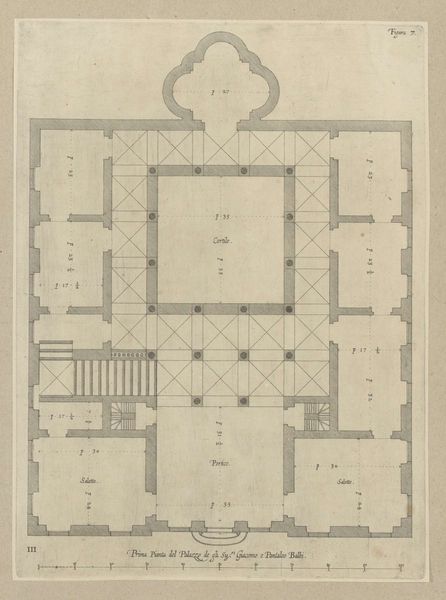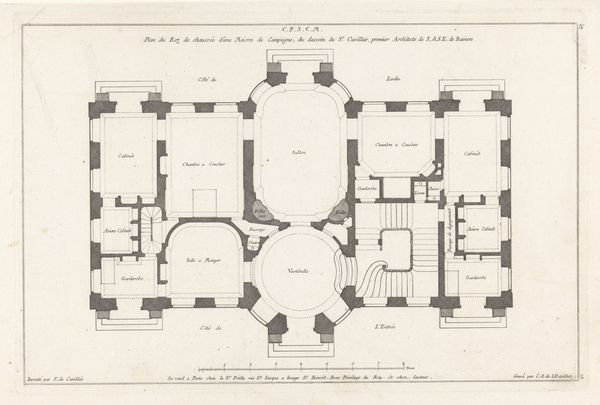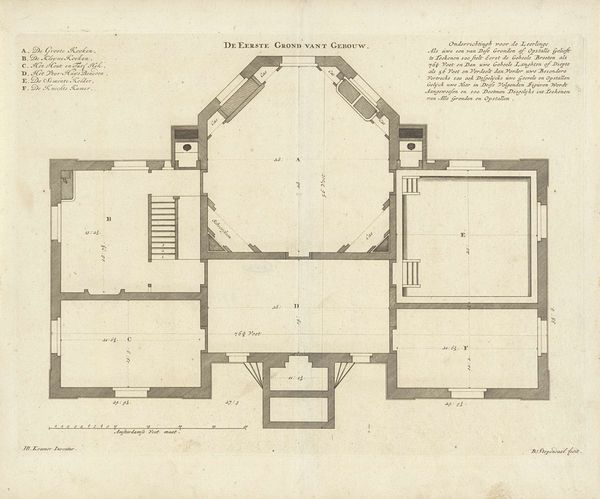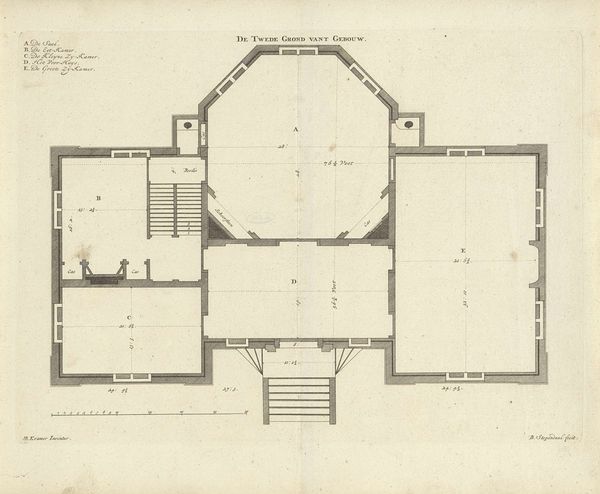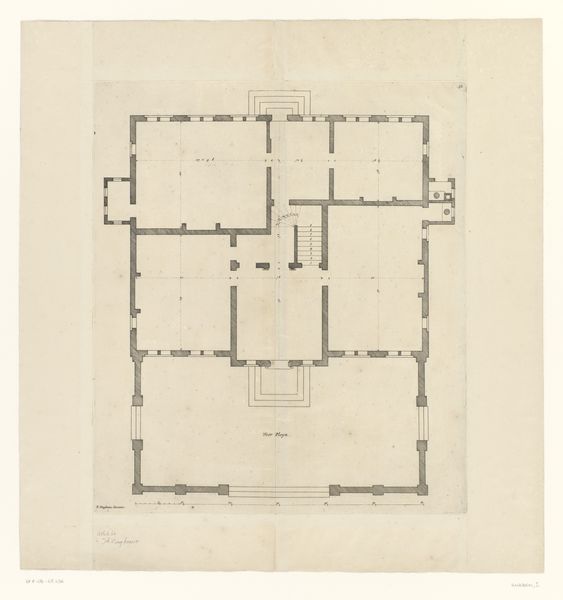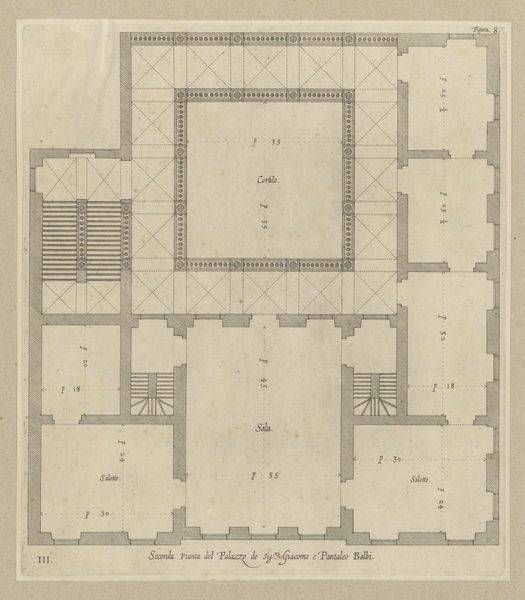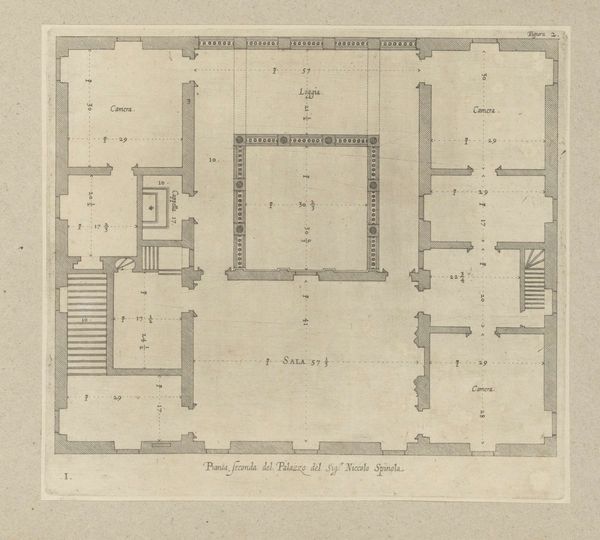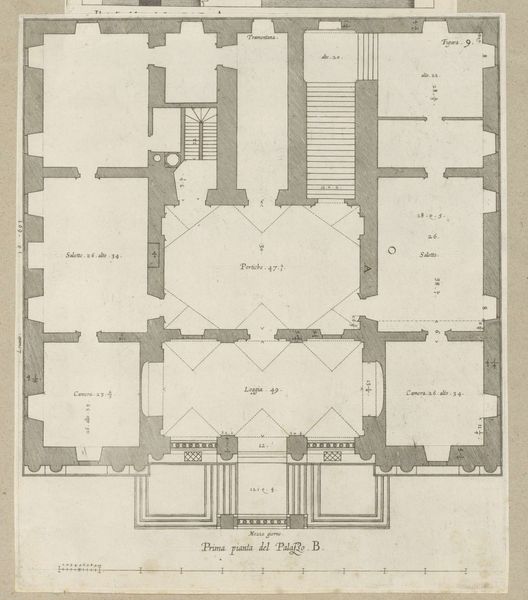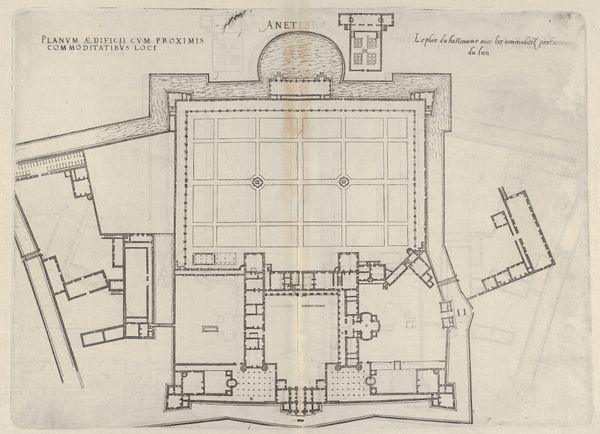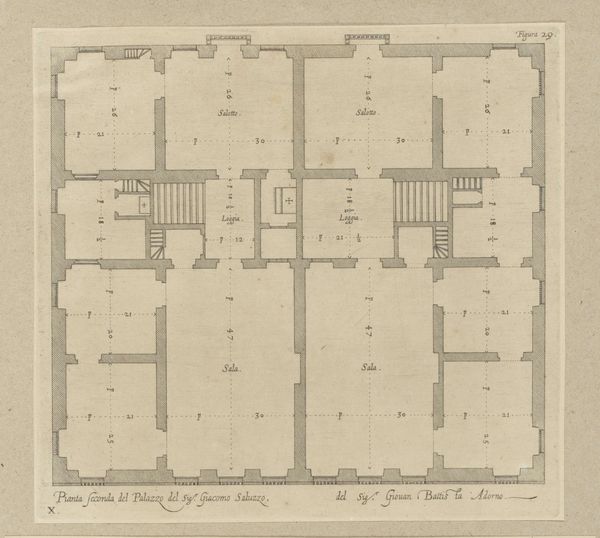
drawing, paper, ink, architecture
#
drawing
#
dutch-golden-age
#
landscape
#
paper
#
ink
#
geometric
#
history-painting
#
architecture
Dimensions: height 294 mm, width 387 mm
Copyright: Rijks Museum: Open Domain
Editor: So, here we have "Plattegrond van de bovenste verdieping van Paleis Huis ten Bosch," or "Floor plan of the upper floor of Huis ten Bosch Palace" by Jan Matthysz, created in 1655, using ink on paper. The precision is striking, but it also feels a bit sterile, detached. How do you interpret this piece? Curator: It's less about coldness, and more about power. Consider the function of such a drawing in the 17th century. This wasn't just an architectural document; it was a visual representation of the Prince of Orange's authority. Each room, each carefully delineated space, speaks to control and order. The geometric forms, particularly the octagon at the center, weren’t accidental. Do you see the emphasis placed on the central hall, what it implies? Editor: Yes, the central hall looks important. Was this design common? Did the centralized architecture embody something specific about Dutch power at the time? Curator: Precisely. The Dutch Golden Age was a period of immense economic and political influence. This floor plan, replicated and circulated, communicated stability, sophistication and grandeur. Note the even distribution of space—no one room drastically overpowers another, at least not at first glance. How might that reflect Dutch values of balance, especially within their Republic at the time? Editor: That makes sense. Maybe it was a reflection of their aspirations for a more egalitarian society even at the highest levels of power? Something like saying even the Prince exists within certain frameworks of order? Curator: That is part of the intention. By showcasing not just the wealth, but the careful design, they were broadcasting their power on their terms. However, while projecting Dutch aspirations for balance, they could only begin to achieve them so it makes you think about who it included, and at what cost? Editor: It is amazing how much a floor plan can tell us about a society’s values and aspirations. Curator: Exactly! Now, I am keen to know what we could unveil from the location and dimension of where artworks and other artifacts would have been presented to invited guests.
Comments
No comments
Be the first to comment and join the conversation on the ultimate creative platform.
